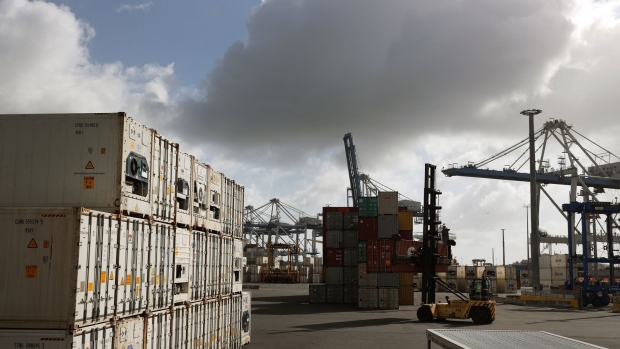Sep 14, 2022
New Zealand Economy Grew More-Than-Forecast 1.7% in Second Quarter
, Bloomberg News

(Bloomberg) -- New Zealand’s economy grew more than expected in the second quarter, avoiding a recession after a surge in Covid-19 cases caused a contraction in the first three months of the year.
Gross domestic product rose 1.7% from the first quarter, when it fell 0.2%, Statistics New Zealand said Thursday in Wellington. Economists forecast a 1% increase. From a year ago, the economy expanded 0.4%, cooling from its 1% annual pace in the previous quarter.
The Reserve Bank is expected to continue to raise borrowing costs aggressively to get control of inflation, which has accelerated to a 32-year-high of 7.3%. Still, with house prices falling and global uncertainty elevated, the prospect of weak growth and even recession in 2023 is rising.
“Subsequent GDP prints are expected to remain volatile as the economy continues the process of transitioning back to pre-Covid-19 norms,” said Mark Smith, senior economist at ASB Bank in Auckland. “The pace of growth will slow, but base momentum should remain decent.”
The New Zealand dollar was little changed after the data. It bought 60.22 US cents at 11:19 a.m. in Wellington, from 60.14 cents beforehand.
RBNZ’s Expectation
Expectations for quarterly GDP varied widely, ranging from zero to as much as 1.8%, which was also the RBNZ’s estimate.
The economy has bounced back after Covid-19 swept the entire country for the first time at the start of 2022, leaving many industries short of staff and customers as people isolated or worked from home. Daily covid cases peaked in late March and began to slowly decline.
As the second quarter started, soaring fuel and food costs continued to damp discretionary spending. In response, the government cut fuel taxes to provide relief for consumers. It also began progressively re-opening the border to foreign visitors from April, boosting the struggling tourism industry.
The RBNZ, which started raising rates in October, last month announced a fourth successive half-percentage-point hike. It increased the Official Cash Rate to 3% and signaled it wanted to raise the benchmark to at least 4% by early next year.
Most economists see another half-point increase in early October but some tip quarter-point adjustments thereafter as higher borrowing costs start to squeeze households.
House prices dropped 4.7% in the three months through August as higher mortgage rates started to bite, the Real Estate Institute said this week.
Other details
The second-quarter expansion was led by services including air travel and hospitality as the tourism industry revived and Covid restrictions eased, the statistics agency said.
- Manufacturing output dropped 5.9% from the first quarter, reflecting the closure of the nation’s only oil refinery
- Construction fell 2.4%
- Farm production rose for the first time in four quarters
- Retail, accommodation and restaurant spending rose 5.9%
- Transport, postal and warehousing jumped 20%, boosted by air travel
- Investment dropped 3.3%
- Exports surged 20%, led by the tourism recovery; imports fell
- GDP per capita gained 0.9% from the first quarter
(Updates with economist comment in fourth paragraph.)
©2022 Bloomberg L.P.






